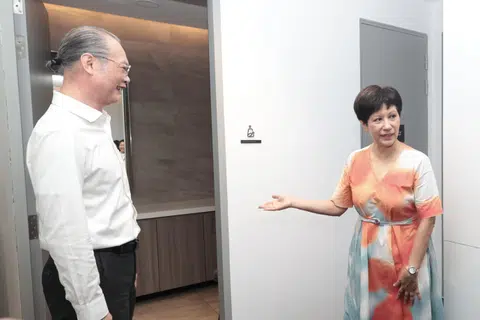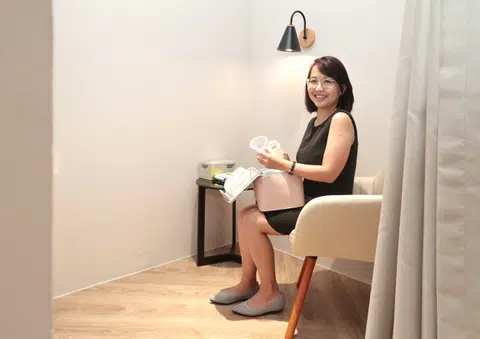More new buildings to provide lactation rooms for mothers
Nursing mothers can look forward to feeding their babies and expressing milk outside their homes with greater ease, as more new buildings will be required to provide lactation rooms in time to come.
New buildings - such as offices, schools and small shopping malls - will need to provide at least one lactation room if they have a gross floor area of 5,000 sq m or more, with the upcoming revision of a code by the Building and Construction Authority (BCA) later in 2025.
Existing buildings undergoing major refurbishment works will also need to adhere to this, BCA said in a release on Feb 12.
The BCA's Code on Accessibility in the Built Environment, which is updated around every five years, provides requirements and guidelines to ensure spaces meet the needs of those with disabilities, the elderly, and young families.
Under the current 2019 version, buildings like malls and offices are required to provide one lactation room only if they are bigger and have a gross floor area of 10,000 sq m. Schools are not under the current list of buildings that need to provide any lactation rooms.
Larger buildings will also need to provide more lactation rooms in proportion to their size.
In hospitals, polyclinics, transport stations and community clubs, at least one additional lactation room must be provided for every subsequent 20,000 sq m.
The revised 2025 code will also lay out compulsory features for these rooms. The current code does not specify such requirements.
Going forward, lactation rooms must be a private space with a lockable door, comfortable seat, sockets located at table height, and have a fixed mirror for adjusting attire. The room must also not be within a toilet, and must minimally be 1.2m by 1.5m.
While existing buildings that are not undergoing major renovations will not have to adhere to the code, they are encouraged to tap BCA's Accessibility Fund to add a lactation room or pod.
The $40 million fund was started in 2007 to help co-fund the construction cost for accessibility and other design features, which include lactation rooms. As at January, 160 private building owners have utilised the fund to retrofit their buildings with accessibility features, with about $20 million still available.
Second Minister for National Development Indranee Rajah said the aim is for the changes to the code to be released in the second quarter of 2025.
Feedback received from a public consultation will be reviewed before finalising the proposed revisions.
Speaking to the media on the sidelines of a visit to new business park Elementum in one-north on Feb 12, she said that lactation rooms are just one aspect in making society more comfortable for those with newborns.
"This is part and parcel of a larger issue - how do you make Singapore a place that is family-friendly?" she noted.

She cited other measures like shared parental leave, which will kick in in April, and the need for good human resources arrangements to cover mothers or fathers taking time off to look after their children.
"I think what we're really doing with all this is signalling that we want society as a whole to be supportive of families in ways big and small."
Ms Indranee was given a tour of Elementum, which houses different biomedical research and development companies, offering 13 lactation rooms across its 12 floors.
The developer of Elementum wanted to ensure there were plenty of lactation rooms available in the building for its tenants, who may face challenges in installing their own, said DCA Architects managing director Khoo Poh Bin.
Ms Tan Yun, who gave birth to a baby boy seven months ago, uses the lactation rooms frequently. The 41-year-old is an assistant director for strategic communications and marketing at MOH Holdings, which is located in Elementum.
This experience is a vast difference from when she was a first-time mother four years ago and working for a different company at the time.

Back then, she was worried whether she would be able to express milk comfortably, as her previous firm did not have any lactation room.
Her former employer turned an extra meeting room into a makeshift lactation room. Though they tried to make it comfortable, it was lacking, said Ms Tan.
After storing her breast milk in the common fridge a few times, she bought a minifridge and placed it under her desk to store her milk.
She was happy to hear of the upcoming revisions to the code.
"I think it would be amazing if every woman is able to walk into a building or their office and have the assurance that they are able to express milk comfortably," she added.
"Once we turn lactation rooms into a necessity rather than a bonus, I think society will be more inclusive."
Syarafana Shafeeq for The Straits Times